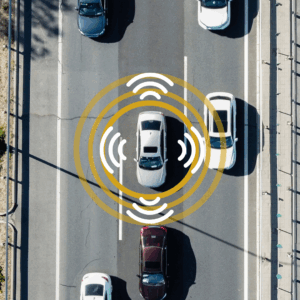There are two kinds of belts in your vehicle’s engine compartment: the timing belt and the serpentine (drive) belts. What function do they serve? The timing belt connects the crankshaft to the camshaft(s), controlling the opening and closing of the engine’s intake and exhaust valves. The serpentine belt drives, or “powers”, several essential components such as your alternator, power-steering pump, air conditioning compressor, and water pump. Older cars may have separate drive belts for each individual component. In recent weeks, we have seen a few cars that “dodged a bullet” – meaning, our proactive customers made the decision to have their serpentine belt or timing belt replaced BEFORE the belt broke. A broken timing belt can result in catastrophic damage to your car’s engine, actually requiring a full or partial engine replacement (thousands of dollars). A broken serpentine belt brake can result in overheating of your engine. Either broken belt will usually leave you stranded on the side of the road, usually requiring a tow truck to get you to a repair shop.
Why do these belts break? They are constructed of rubber and cords, which give them strength. As a belt ages, the flexing, heat and strain weaken the cords. timing belts generally cannot be visually inspected, but serpentine belts can be inspected for wear. If a serpentine belt is full of tiny cracks, frayed, has pieces of rubber missing, is peeling or otherwise damaged, it needs to be replaced immediately. If the belt appears oil soaked or glazed, it also needs replacement. Be aware that the serpentine belt may look good on the outside surface, but the inside surface that powers your various systems may be ready to snap. They may make a noise or squeal, but oftentimes, there is no warning.
So, how do you know when you should have the engine belts replaced? First, check your Owner’s Manual. You will find your vehicle manufacturer’s recommendations on when to replace either the timing belt (if your car has one, some have a timing chain and do not require replacement) or the serpentine belt(s). The recommendation for replacement is based upon a combination of age of the vehicle and/or miles driven, so keeping track of when the belts were replaced is important. timing belts require replacement between 7-10 years, and/or between 60,000-110,000 miles. serpentine belts that have 50-60,000 miles on them, or are 4-5 years old should be replaced.
Remember, having these belts changed BEFORE they are old and brittle is the best way to maintain the integrity of your engine, and increase the longevity of your vehicle. Timing belt replacement is not an inexpensive repair, but it is significantly less expensive than repairing the resulting damage should that timing belt slip or break. Similarly, replacing a serpentine belt before it breaks is less expensive than the alternative. If you have questions on what type of belt your particular vehicle has and when engine belt replacement is recommended, please feel free to call and talk to one of our Service Advisors. Our Honest and Accurate technicians enjoy the opportunity to help you keep your car running safely, without spending more than you have to.



